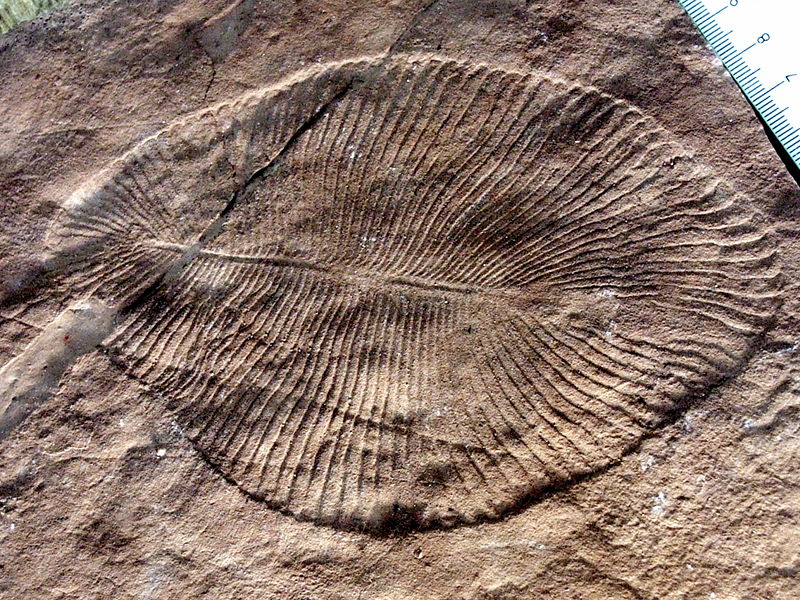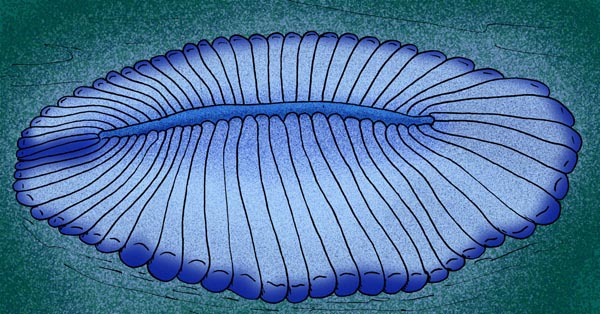Getting fossils wrong isn't anything new. One of the first dinosaur fossils ever discovered was Iguanodon, which researchers at first thought looked like this.
(Getty Embed)
Over the years, they realized that they had made a bunch of errors in piecing together the animal's skeleton. Finally, they arrived at something like this.
(Getty Embed)
With ancient creatures like an Iguanodon, there are things that can help you eventually get this correct. For example, when more complete fossils are found, and there's general research into other dinosaur species, a better understanding of how these animals lived and moved is produced. The more we learn about each dinosaur, the easier it is to figure out all other dinosaurs.
But then, every once in a while, you get a fossil like this.

(Wikimedia Commons)
What in the world is that?
It turns out that this is Dickinsonia. Thanks to a recent study at Australian National University (ANU), we know that it was the earliest known animal on the planet—an odd creature that grew up to 1.4 metres (4.6 feet) long and lived around 558 million years ago.
But the fossil itself was first described in 1947. And for decades, scientists had argued about what it was. Since it lived before the Cambrian explosion 541 million years ago—this is generally considered the birth of complex modern lifeforms—scientists had very little to compare it to. Was it lichen? Algae? Coral? Bacteria colony? Decorative serving dish for a prehistoric potluck?
It's journey from genius-stumping character in Guess Who?:Paleontologist Edition to earliest known animal was finally made possible by some dedicated work by Ilya Bobrovskiy of ANU.
Finding the fat
Basically, most Dickinsonia fossils have no organic material left in them. Bobrovskiy had to search for a better preserved fossil—one that could give him a clue as to the kind of things that made up this bizarre thing. His quest took him to Lake Beloye (a.k.a. White Lake) in a remote part of northwestern Russia.
There he found a fossil that was well-preserved enough to contain some organic matter. Once he was able to test cholesterol, or fat molecules, the debate was laid to rest. This thing was an animal!
Learn more about how this scientist discovered our earliest relative in the video below.
 An artist's impression of Dickinsonia, one of the strangest creatures ever to roam Earth. (Wikimedia Commons/Stanton F. Fink)
An artist's impression of Dickinsonia, one of the strangest creatures ever to roam Earth. (Wikimedia Commons/Stanton F. Fink)










WOW that is soooooooooooo cool! It looks odd too!